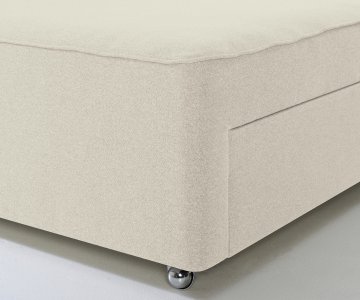London architects

In the US and beyond, big brands are exhibiting their environmental credentials, but Architects companies are insisting on a move past agenda-less verbiage.
Ever since cities were created there has been a migration to them and away from the country. This continues to be the case despite our ever more romantic vision of the rural – only recently have we seen marginally more people migrating to the country. When working with greenbelt land, it is important to be as detailed as you can throughout the planning stage. By doing so, you will maximise the chances of greenbelt planning permission approval and understand from the outset how to budget for your new greenbelt development. Green belt architectural consultants have been an integral part of many residential and commercial projects both past and present. They have a team of experts who are well-versed in all aspects of architecture. The inherently public nature of architecture means that the work architects do is akin to sociology and psychology; setting the stage for social behaviors and interior reactions. Who is encouraged to enter into a space or community, and who is dissuaded? How are people made to feel in given context? Many highly experienced green belt architects work across all sectors. Some have a passion for conservation architecture and sustainable, quality design whereas some are specialists in private residential work. The extent of agricultural and forestry land remains high in Green Belt and overall 93% remains undeveloped. A significant area (23%, compared to 14% for England) of land in the Green Belt is neither registered for agricultural use nor is it woodland. This land is made up of such uses as small paddocks, small holdings and extensive gardens.

Green belt architects believe that buildings that are carefully designed and detailed, with high standards of energy efficiency with excellent internal space standards, will last a lifetime. Architecture consultants specialising in the green belt don’t do everything, rather they focus on the areas where they can add value for their clients. This sentiment always translates into action. There is clear evidence that while green belts have stopped urban expansion (at least, in some cities), they have resulted in unintended consequences: higher-density development at the urban fringe, including disconnected “edge cities”, and “leapfrogging” development over the green belt to undermine other areas of countryside. The main aim of Green Belt policy is to stop urban sprawl by keeping land permanently open (their essential characteristics are their openness and their permanence). An understanding of the challenges met by GreenBelt Land enhances the value of a project.
Green Belt Architecture
A sustainably designed building is also one that complements and supports surrounding ecosystems, rather than damaging them. This might include features like ‘living walls’ and roof gardens that provide flowers for pollinators. It is necessary to prevent the proliferation of new dwellings in the Green Belt and, as a general rule, an applicant for a new dwelling must demonstrate that there is a real need to live in the Green Belt by virtue of the nature of the employment. If the dwelling is for agricultural purposes then the application should be supported by evidence of need from an agricultural development consultancy. The interior designers that work with green belt architects have worked on covers country houses, townhouses, new build homes & pied-à-terres, all with a creative vision to inspire, evoke well-being & reflect individuality. Architects who specialize in green design are constantly searching for new techniques to improve the quality of green buildings, without compromising their functions. Green belt architects’ projects range from residential extensions and new dwellings to new commercial and leisure development. They are also able to provide services for farm and land owners on agricultural development and Changes of Use. A solid understanding of Net Zero Architect makes any related process simple and hassle free.
Architecture is more than a mere record or reflection of who we are. Instead, the fundamental purpose of architecture is as a means for creating our cultures and ourselves. Although net-zero buildings represent a fragment of new construction projects, the technology, tools, and knowledge that architects have acquired over the past years have made designing a net-zero building the new norm. For every project, there’s a bigger picture beyond planning. Green belt architects will guide you and your proposals through each stage of the planning process, giving complete honesty at all times. This way, you can be confident your project is heading in the right direction. England is plagued with severe housing shortfalls, particularly in the south-east and London, and this area also has the largest amount of Green Belt land. Building on just 25% of the Green Belt land inside the M25 would allow for just over one million new homes to be built. A green building is one where that implements individual practices and processes as incremental steps towards environmental sustainability. As alluded to in the “operation and maintenance” step earlier, green initiatives can include switching to renewable energy, implementing natural ventilation systems and reducing your carbon footprint long term. Can Green Belt Planning Loopholes solve the problems that are inherent in this situation?
Health And Safety Legislation
Green buildings today are some of the most beautiful works of architecture. They take inspiration from the natural world, and try to live with the environment not conquer it. Architects specialising in the green belt offer a full range of architectural services, from concept and masterplan design for planning stages, through to technical production drawings and full contract administration. Projects include a full spectrum of work from small bespoke conversions for private clients, through to multimillion-pound new build projects for larger corporate clients and developers. Some green belt architects provide building regulation details and section drawings either as part of their architectural design package or as a separate service. Their team usually has a wealth of experience in providing planning permission advice, building regulation detail and architectural design drawings. Green building is a holistic concept that starts with the understanding that the built environment can have profound effects, both positive and negative, on the natural environment, as well as the people who inhabit buildings every day. Although green belt suggests something visual, appeal decisions and case law tell us that things you can’t see from the nearest public viewing point – paving, underground storage – are also considered harmful to this openness. So even if your plot is surrounded by dense evergreen trees and can only be seen by drone photography, that doesn’t mean you’re not limited by openness. Local characteristics and site contex about New Forest National Park Planning helps maximise success for developers.
A ‘green’ building is a building that, in its design, construction or operation, reduces or eliminates negative impacts, and can create positive impacts, on our climate and natural environment Architects, engineers, builders and other professionals within the built environment have been working under the banner of progressive sustainability for some time now – but we have done just that: sustained and maintained the status quo. The construction industry now desperately needs to achieve net zero. Architecture is never simply a matter of piling materials on top of each other to produce buildings but the thoughtful manipulation of those materials on the basis of ideas which are, however, historically changeable. Despite its undoubted achievements, it is time to review the green belt as an instrument of urban planning and landscape design. The problem of the ecological impact of cities and the mitigation measures of major climate changes are at the top of the urban agenda across the world. The NPPF states that inappropriate development is harmful to the Green Belt. Applicants would need to demonstrate ‘very special circumstances’ to justify inappropriate development in the Green Belt which clearly outweighs the harm to the Green Belt and any other harm. Key design drivers for Architect London tend to change depending on the context.
Quality Designs
In essence, a green belt is an invisible line designating a border around a certain area, preventing development of the area and allowing wildlife to return and be established. A green belt architect’s team has a proven track record of helping projects to effortlessly navigate the green belt planning system. They recognise the need to provide their clients with clear, up to date, discerning advice, in addition to effective development solutions and strategies that minimise exposure to costs and risk. Building on the Green Belt will not solve the crisis in affordable housing, despite some commentators’ arguments that simply building more makes housing affordable. Developments in the Green Belt are an inefficient use of our finite land resources and delivering large scale developments in the Green Belt is costly and more difficult. Find further intel about Architects at this Open Spaces Society entry.
Related Articles:
More Background Findings With Regard To Net Zero Architects
Supplementary Information With Regard To Green Belt Architectural Businesses
More Findings With Regard To Green Belt Architects
Further Information About London Architects
Further Information About Green Belt Planning Consultants
Additional Findings About Green Belt Planning Consultants
Further Information With Regard To Green Belt Architects



Ingen kommentarer endnu